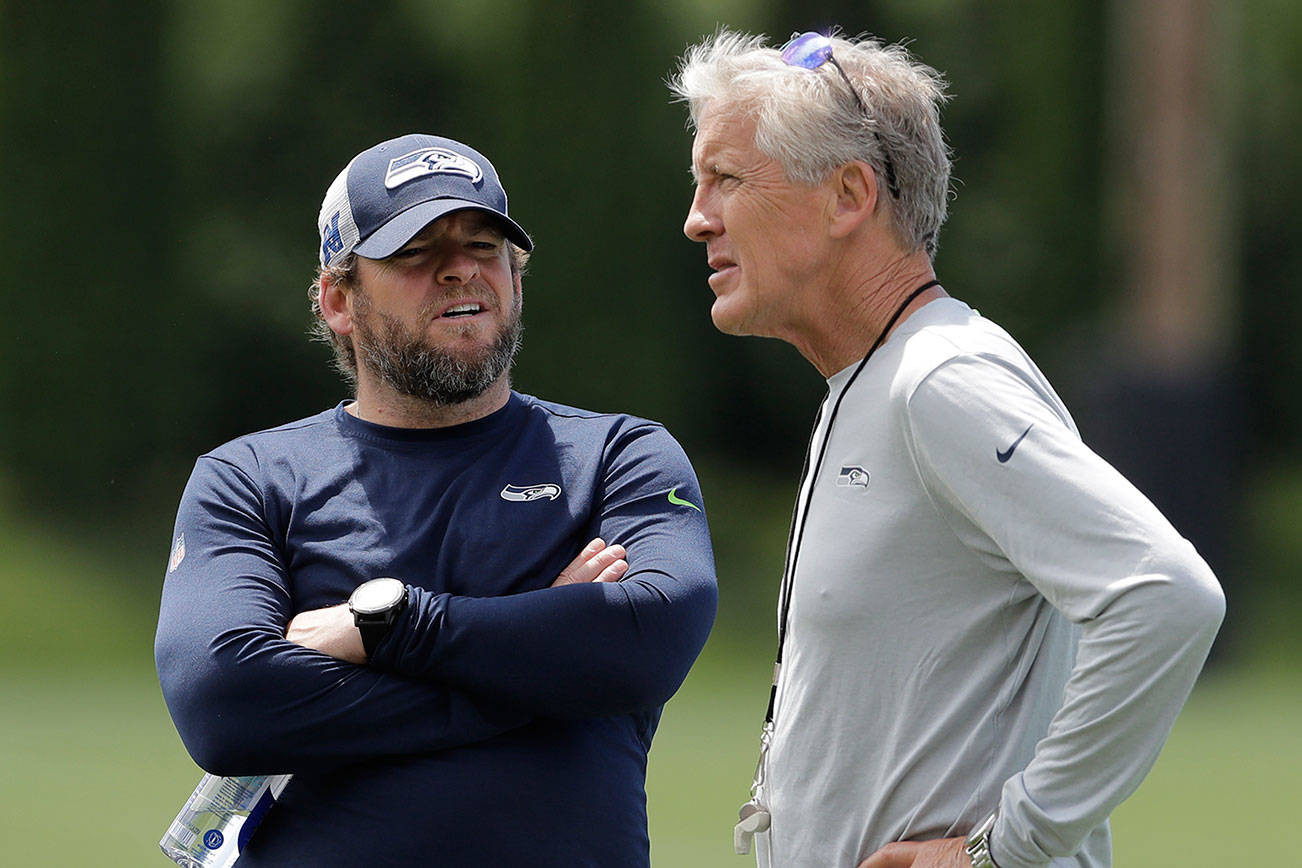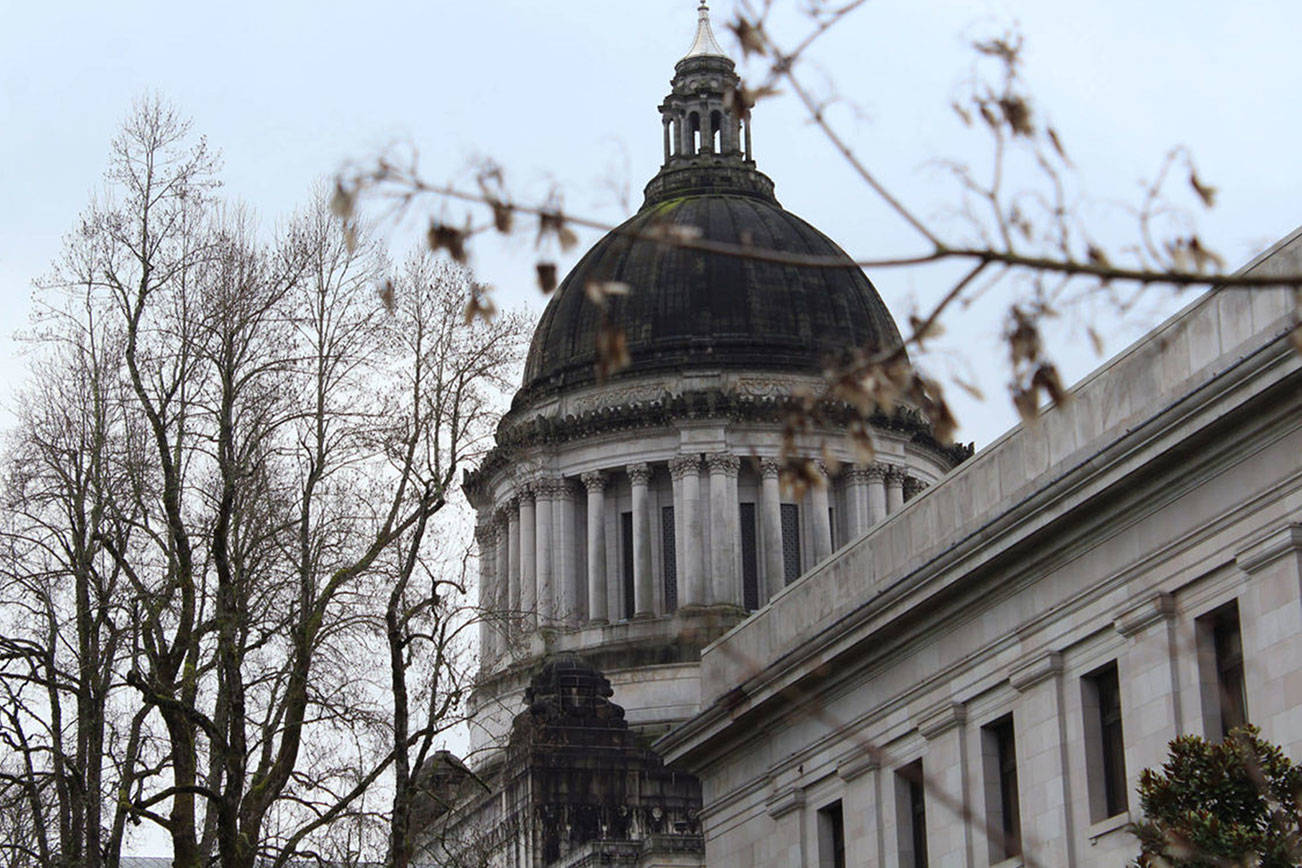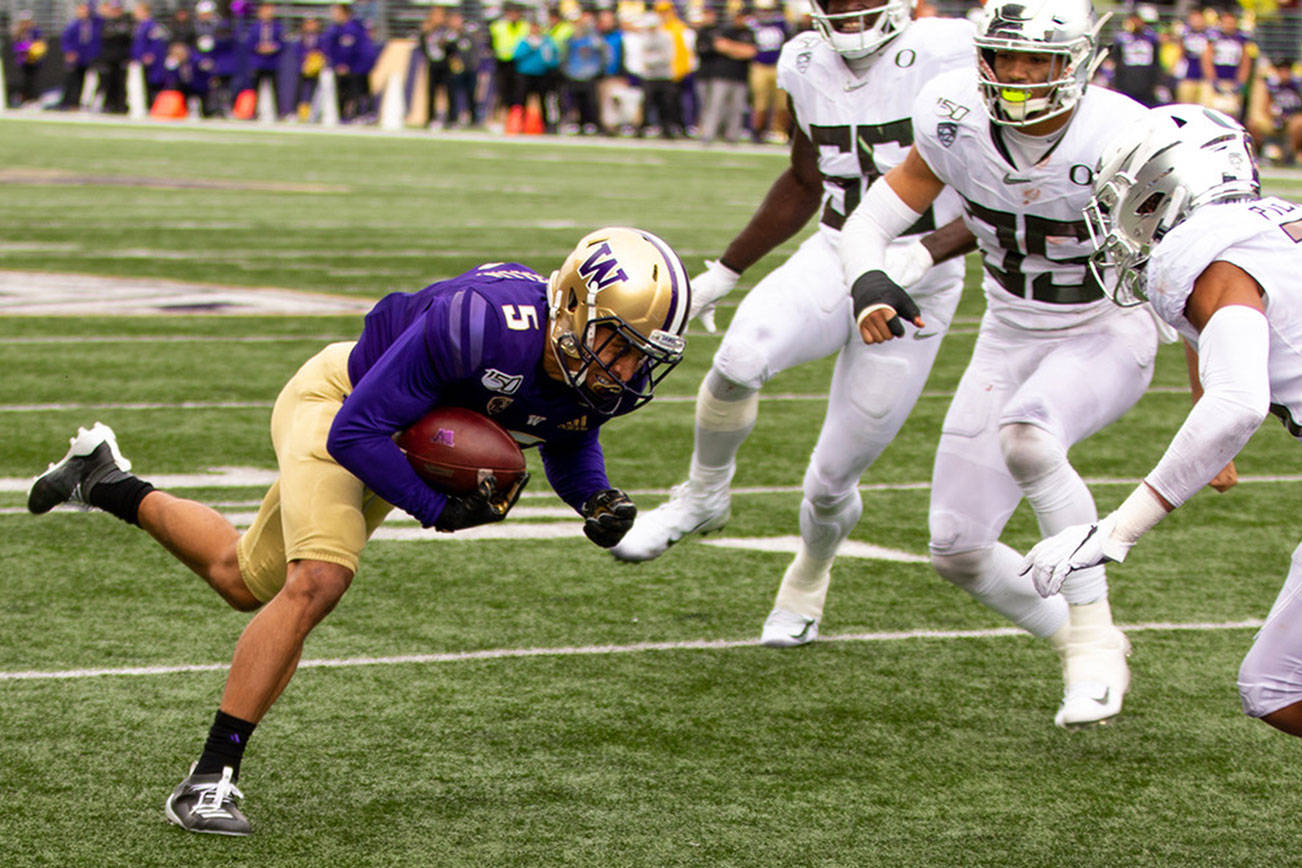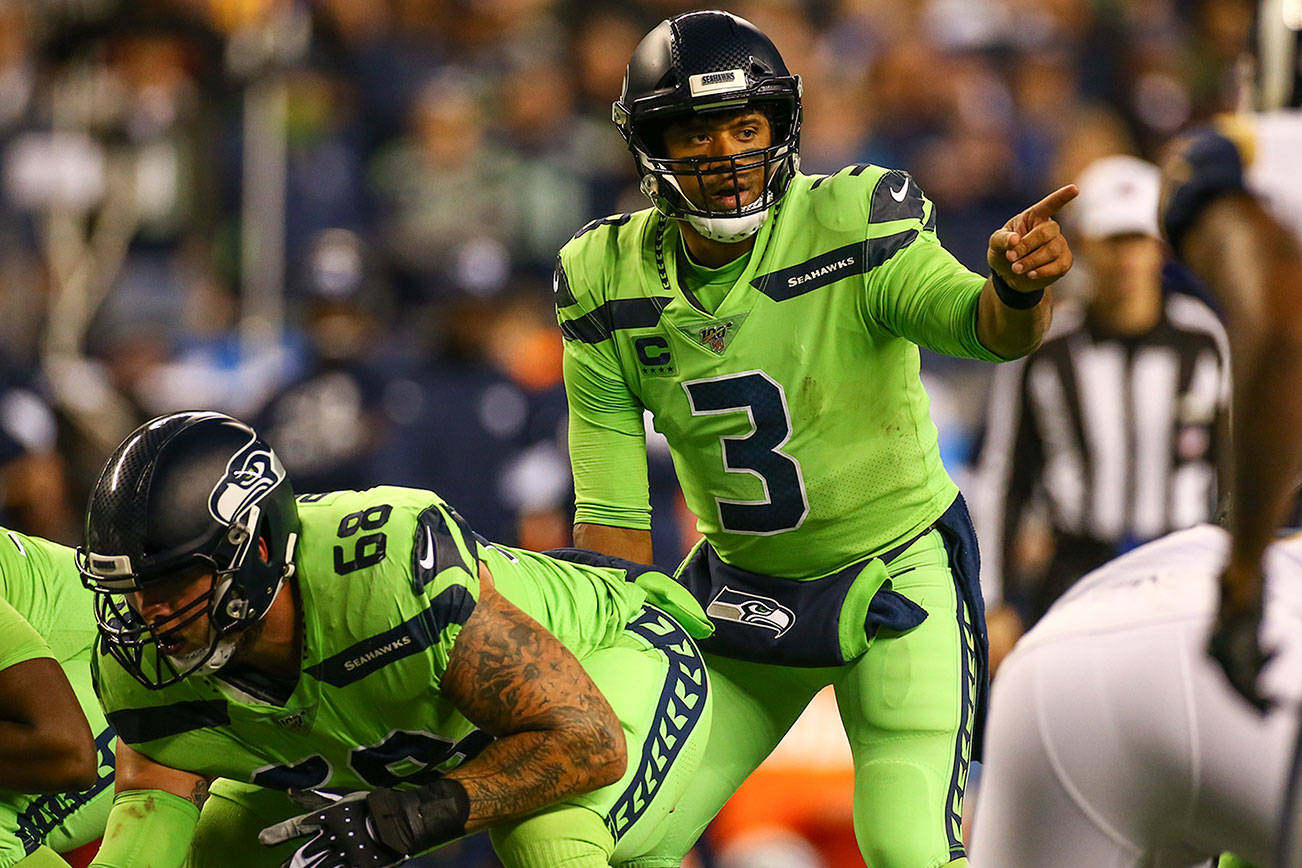Is this the Seattle Seahawks’ year?
I suspect Seattle general manager John Schneider sure hopes it is.
The Seahawks begin their preparations for the 2019 season in earnest Thursday when training camp opens at the Virginia Mason Athletic Center in Renton, and this will be the final year before Seattle’s 180-degree turn from being a spread-the-wealth team to being a top-heavy team reaches full maturity.
There seems to be a general sense of optimism surrounding the Seahawks heading into 2019. Last season served as the test of whether Seattle could survive the dissolution of the Legion of Boom defense, and before the season began there were predictions of catastrophic collapse. Instead, the Seahawks finished 10-6 and made the playoffs, despite the absence of the likes of Richard Sherman, Kam Chancellor and, for most of the season, Earl Thomas.
An offseason followed that saw a modest amount of roster turnover, with the biggest news being the locking down of franchise quarterback Russell Wilson to a long-term contract extension. Now Seattle once again appears to be a popular pick to make some noise during the postseason.
This may be the year the Seahawks have to make their run, because next season is when Schneider’s salary cap headaches reach full intensity.
When the Seahawks were at their peak in 2013-14, reaching the Super Bowl both seasons and winning it the first time around, they were the epitome of the team that won without players who were under big contracts. According to Spotrac.com, the player who hit the salary cap the hardest — tight end Zach Miller, of all people, at $11 million — used up just 7.98 percent of the cap. Seattle had the luxury of having a starting QB in Wilson who was still playing under his third-round rookie contract. He and the likes of Sherman, Bobby Wagner and K.J. Wright all made less than $1 million.
The incredible success Schneider and coach Pete Carroll had in the draft from 2010-12 created that scenario, and they deserve a huge amount of credit for that. Having so many players punching above their pay grade allowed the Seahawks to be aggressive in the free-agent market, and before the 2013 season they signed defensive ends Michael Bennett and Cliff Avril to address the team’s biggest need, the pass rush. That played a big role in Seattle’s Super Bowl success.
But ever since then Seattle’s had to pay the piper. As players approached free agency, Seattle was compelled to give them bigger contracts. Schneider did a masterful job navigating those waters, somehow keeping that stellar defense largely intact for four more seasons, which is a minor miracle in the salary-cap era. But what it meant was that the Seahawks gradually became top heavier, devoting more and more of their financial resources to their best players, and Seattle didn’t follow up with the same level of draft success to fill out the roster with players performing above their contracts. The team plateaued.
Now the Seahawks are on the verge of their complete financial about face. Wilson’s contract extension — four years, $140 million — is the largest average annual salary in the NFL at $35 million. Wagner is reportedly on the verge of signing an extension that will make him the highest-paid inside linebacker in the league at somewhere around $17.5 million a season.
And just like that Seattle will have become a team that went from being devoid of big-money stars to being dependent upon them.
For perspective, in 2013 Seattle’s two highest-paid players, Miller and tackle Russell Okung, absorbed less than 15 percent of the salary cap. In 2020, when Wilson’s extension kicks in, he’ll surpass that alone as he takes up 16.47 percent of the cap. If Wagner gets his extension he’ll eat up somewhere around 9 percent. That 10-percent difference between 2013 and 2020 in salary-cap percentage by the team’s top two earners represents the amount it would typically take to sign two high-impact players (Duane Brown and Justin Britt will make just short of that percentage in 2019), or four solid starters (the quartet of Wright, Tyler Lockett, Bradley McDougald and Mike Iupati are right at 10 percent in 2019). It means the Seahawks will have little financial wiggle room.
Which is why Schneider is probably stocking up on Advil.
The good news for Schneider is that he doesn’t have to maneuver himself around this situation just yet, as Wilson’s and presumably Wagner’s extensions don’t take full effect until next season. And Seattle has some low-cost starters in place like cornerbacks Shaquill Griffin and Tre Flowers and running back Chris Carson. The Seahawks may have enough pieces in place to put themselves into the contention conversation this season.
But the salary-cap crunch is closing in. And it may mean this is the year the Seahawks had better make their move.
Follow Nick Patterson on Twitter at @NickHPatterson.








